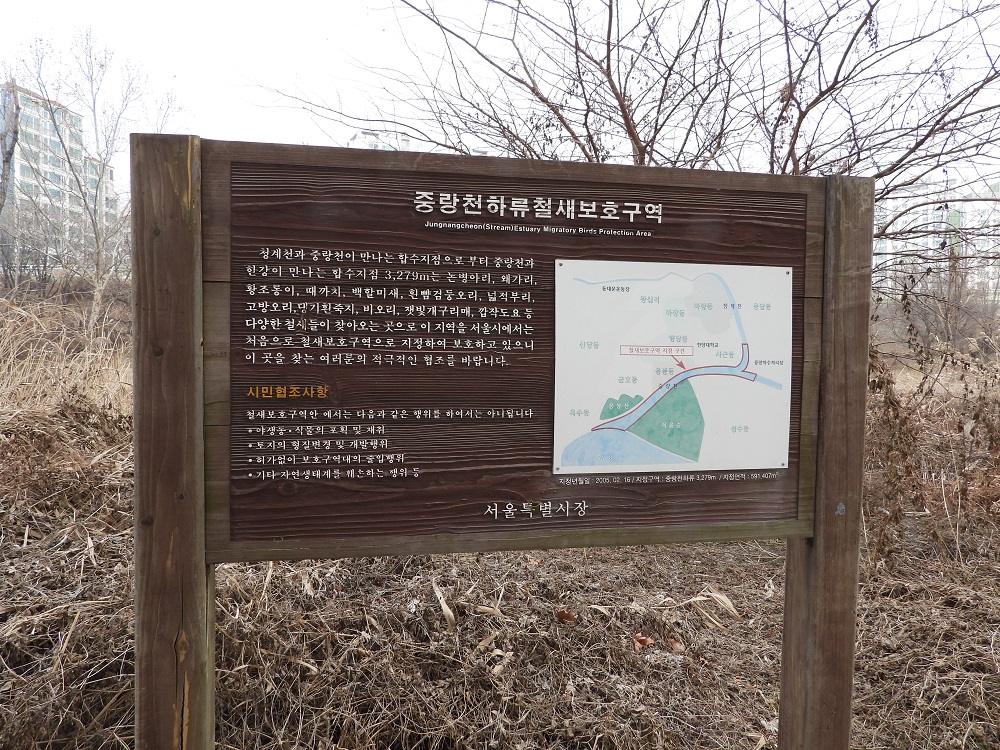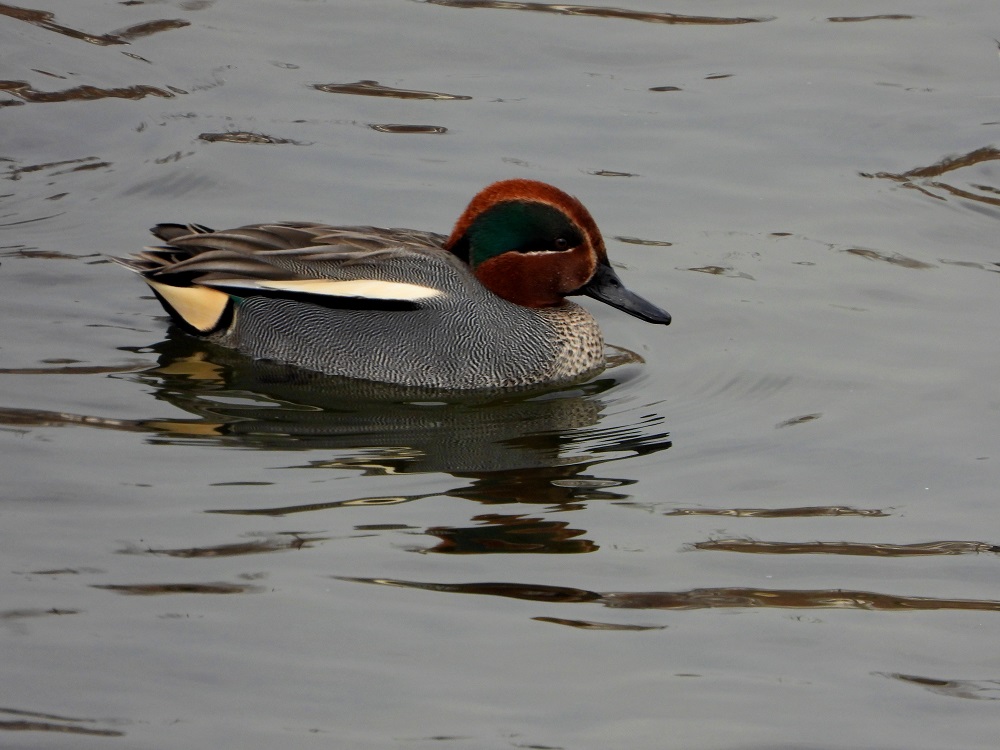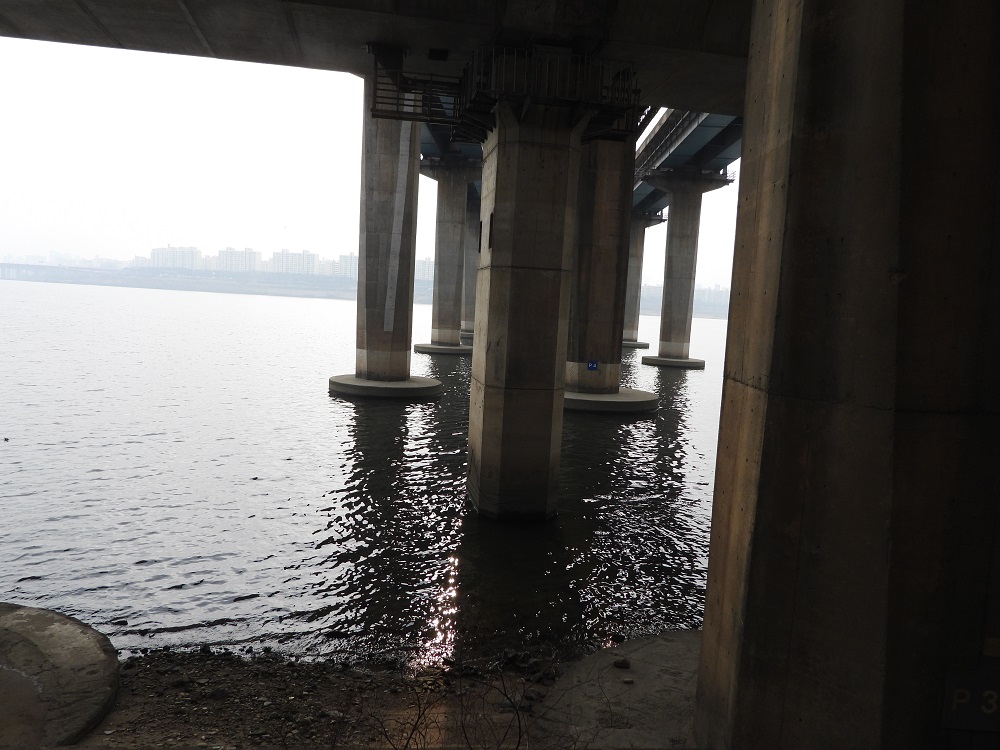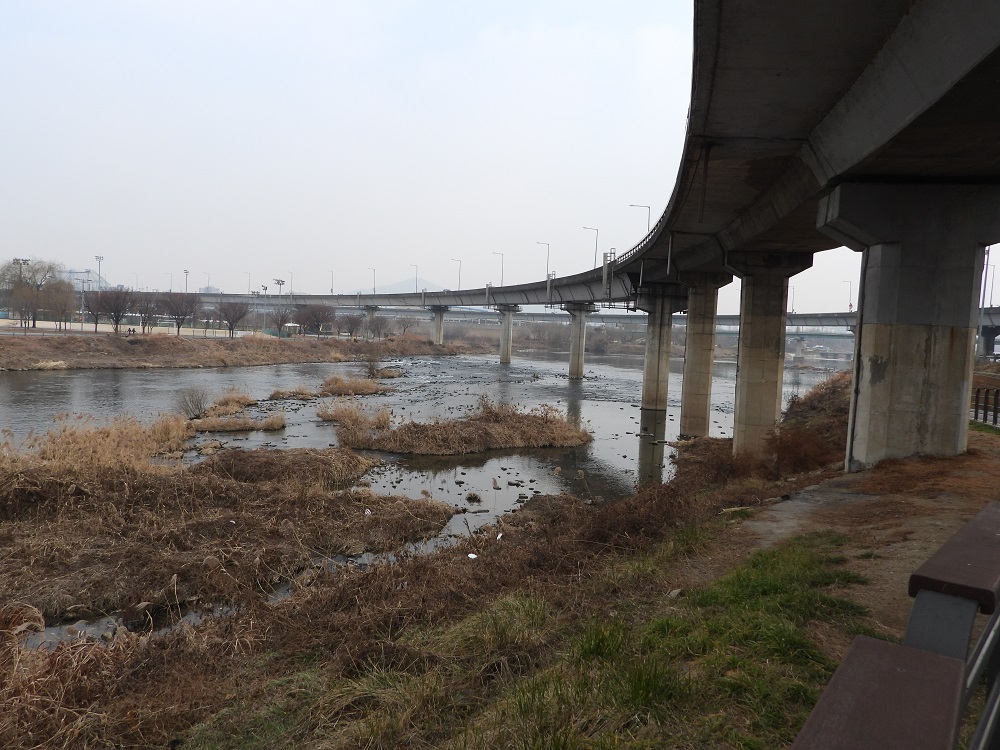Birds News from Bernhard Seliger
One of the delights of living in Seoul is that in-mid of the city or nearby there are some easily reachable bird-watching spots, among them the estuary of the rivulet Jungnangcheon flowing into the Han river. However, like elsewhere in the country, these spots are constantly changed, and often deteriorating, mostly through new construction. Jungnangcheon estuary has always had a sizable population of ducks and other water-birds, and it was famous for a large winter population of Mandarin ducks, but in recent years it has markedly declined. While it is impossible to pinpoint one reason alone, while mild winters add to a less attractive wintering in city, at least partially the explanation seems to be poor management of the habitat in the area. For several years a project to built a new Eunbong bridge caused extreme disruption of the river, but at least a fenced-in construction area around the bridge-building project also guaranteed enough distance of people and birds. At the same time, a lot has been done to make the area more attractive for bicycle riders and promenaders Unfortunately, doing so the healthy flight distance of man and bird was not observed. After finishing the construction, currently strollers and bicyclists walk and drive immediately by the area just West of the bridge, where in the past the largest group of ducks and other birds could be found. Not surprisingly, currently they are much more scattered here and there, and often small groups of birds being disturbed fly this or that way along the stream.
A survey on the morning of February 2nd, from Oksu bridge (over Han River) in the West to Seongdong bridge (over Jungnangcheon) in the East, brought a total of a little less than 1100 birds only (whereas in peak times, sometimes more than 10.000 birds were seen here in the past). This includes still a nice mixture of different ducks species, but not much else. At total of 33 Mandarin ducks was counted, and the largest groups of birds included Common Pochard (160), Eurasian Coot (138), Tufted Duck (134) and Mallard (129) – surprisingly, that morning not a single Spot-billed duck was counted there. Also, Northern Pintal (89), Gadwall (57) and Northern Shoveler (54) were represented, plus much smaller number of Eurasian Teal (28), Smew (7), Common Merganser (only 2 on the Han River), Great Crested Grebe (14), Little Grebe (7), two Great Egrets and one Little Egret, plus two Grey Herons. This small numbers and the only 25 Great Cormorants are markedly different from past counts. A single Common Sandpiper was the only wader, a Kestrel and an Eastern buzzard the only raptors counted.
A number of easy-to-implement measures come to mind for habitat improvement>
– Directly in the Eunbong area, a screen (ideally of reed material, and very inconspicuous) could help to reduce disturbance for the birds. Such a screen could be low-cost and might even be removed in the summer time. For bird-watchers and – photographers, small outlooks could be put inside.
– In several areas, in particular on the South side of Jungnangcheong, bulldozed areas or areas completely devoid of any vegetation could be much improved, with bushes and some larger trees planted. This would not only increase habitat for smaller birds, but also would reduce again disturbance from strollers and bicyclists – given the size of groups of these, the equipment including transistor radios, and their often shouted conversations, this disturbance is not small. – While the easternmost part of Jungnangcheong in the area has a lot of small islands and places to roost for birds in mid of the stream, and consequently had a large number of birds foraging and roosting, in the more Western parts from the old foot bridge to the Han river, currently there are few such places. Could there be an artificial help for creating such? One idea would be to green the foots of the bridges, where possible, like on Oksu bridge.








